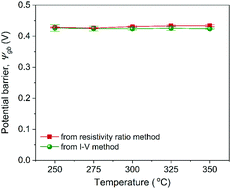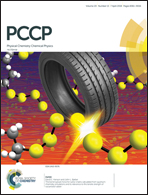The exceptionally large height of the potential barrier at the grain boundary of a LaGaO3-based solid solution deduced from a linear diffusion model†
Abstract
The extent of the influence of space charge on the electric current through the grain boundary in solid electrolytes can be parameterized by the grain boundary potential, i.e. the height of the potential barrier formed at the grain boundary. Previously the value of this parameter has been estimated exclusively by the ratio of the grain boundary resistivity to the bulk counterpart over several decades. We recently demonstrated that it can be alternatively determined by analyzing the current–voltage characteristic of the grain boundary. Furthermore, we theoretically justified that the conventional method is in fact a subset of the new method, therefore, the latter is a more reliable and comprehensive approach to determine the grain boundary potential. Here, we present the experimental results that verify our theoretical justification. The values of the grain boundary potential determined for 1 mol% Sr-doped LaGaO3 (LSG1) employing both methods are in excellent agreement with one another. Such a consistency has not been reported for other solid electrolytes to date and we provide an explanation for it. Our data also indicate that for the case of LSG1, the Nernst–Einstein relation is preserved at the electric field exceeding 900 kV cm−1.



 Please wait while we load your content...
Please wait while we load your content...